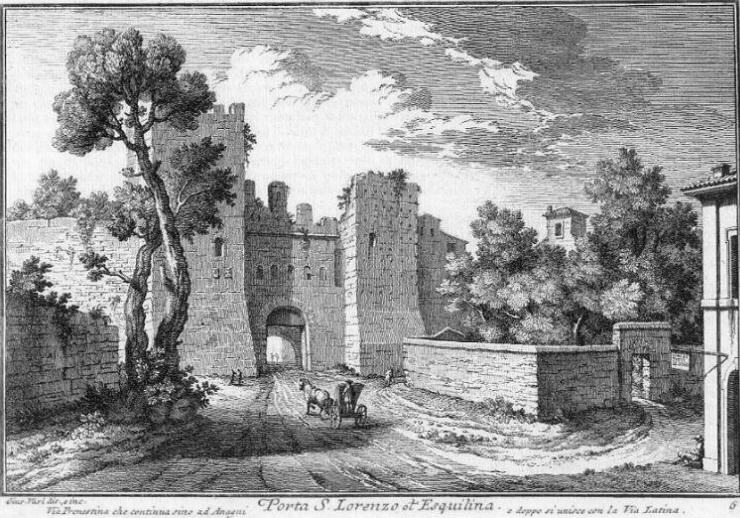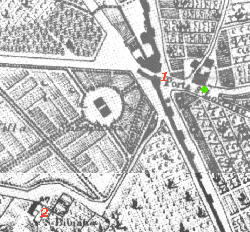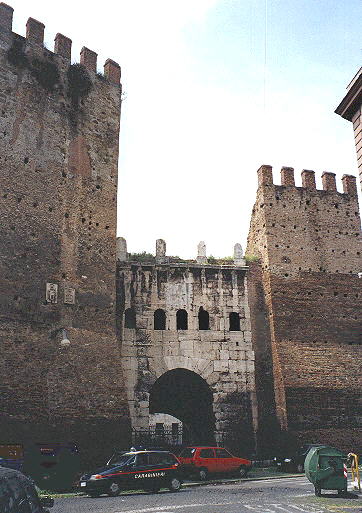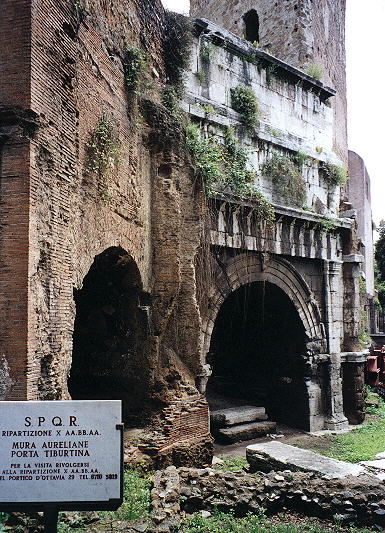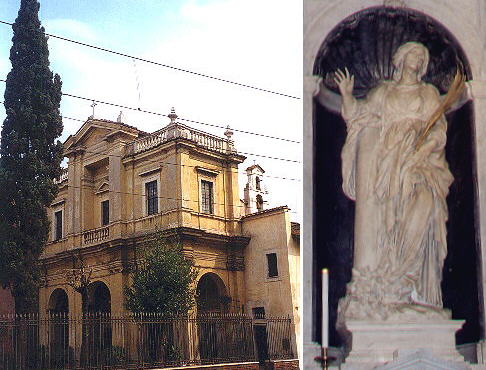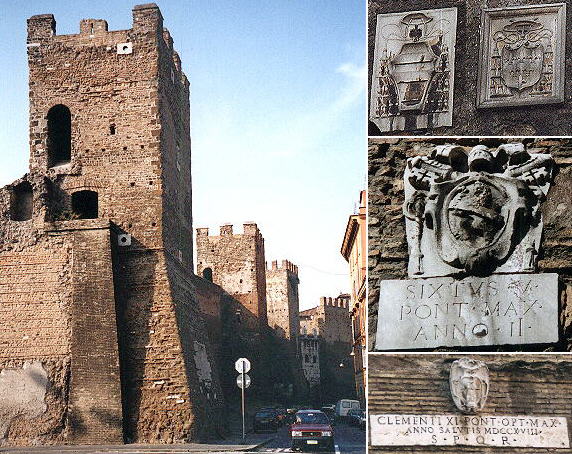  Porta S. Lorenzo (Book 1) (Day 2) and (Day 3) (Map A3) (Rione Monti) In this page:
Very few Romans would today associate Via Prenestina with Porta S.
Lorenzo, because now Via Prenestina starts immediately outside Porta
Maggiore, while it is now Via Tiburtina which begins at Porta S. Lorenzo,
which is therefore called also Porta Tiburtina. The view is taken from the green dot in the small 1748 map here below which shows:
1) Porta S. Lorenzo; 2) S. Bibiana.
The gate has been preserved by an opening in the walls a few yards to the left, but unfortunately the buildings so close to the walls hide and penalize this very interesting gate.
The inner gate is an arch built by Augustus and restored by Titus and Caracalla celebrating three aqueducts (Acqua Marcia, Tepula e Giulia) entering Rome. The emperor Onorius incorporated the arch in the gate when he restored Aurelianus' walls at the beginning of the Vth century. The gate was also called Porta Taurina (Taurus=bull) after the bull's head on the arch (see background).
Termini railway station is now between Porta S. Lorenzo and the little church of S. Bibiana (Vivien), which was built on the site where a young woman was tied to a column and lashed to death. Gian Lorenzo Bernini had already a solid reputation as a sculptor when in 1625 Urbanus VIII commissioned him the restoration of this church. As an architect Bernini did not fare that well in S. Bibiana, but the statue of the saint is the first of a series of masterpieces. According to the traditional iconography she is portrayed with the symbols of her martyrdom: the whip and the column. The Walls between Porta S. Lorenzo and Porta Maggiore
High towers rebuilt by Nicolas V characterize this section of the
walls. On the gate itself there are coats of arms of a Cardinal Farnese
and a Cardinal Carafa (the latter is the only coat of arms of the Carafa
which one can see in the streets of Rome, because at the death of Pope
Paulus IV Carafa they were all destroyed). The lower tablet gives indications
about who paid for the restoration: a) the date: the year is not
related to the Pope, but is the AC year. b) the Latin case of the
Pope's name: indicates it was "to" Clemens" not "Clemens", therefore
the Roman Senate (SPQR) and (not the Pope) paid for the restoration: you
can notice the difference versus the coat of arms of Sixtus V.
Next plate in Book 1: Porta Maggiore Next step in Day 2 itinerary: Villa Altieri Next step in Day 3 itinerary: Basilica di S. Lorenzo fuori le Mura Next step in your tour of Rione Monti: Rovine del Tempio di Ercole Callaico
Go
to |
All images © 1999 - 2003 by Roberto Piperno. Write to romapip@quipo.it
